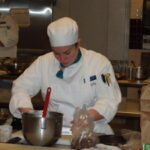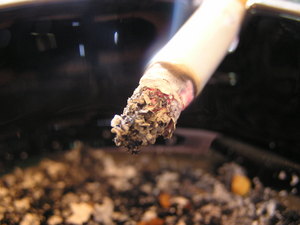When a cat begins drinking more, it is not an overnight phenomena. No big switch is flipped. Rather this is a condition that develops over time. Often, owners report that normally they never see their cat’s drink at all when they present them with a sudden increase in thirst. As far as a disease symptom, it’s a very subtle sign and can take time for an owner to recognize its significance.
Perhaps it is during supper and your cat is crooning his evening “feed me” sonata to you. As you deposit tonight’s can-based culinary specialty into the bowl, you may realize that his water dish is bone dry. Funny, you thought you had filled it up this morning before work. Didn’t you? Maybe suspicion grabs hold then, or perhaps you aren’t convinced and decide the monitor the situation.
Its worth knowing that there are a number of factors that can alter the volume of water a cat drinks. Not all reasons are nefarious nor pathological, though it’s important to remember that this change can be a subtle sign of the onset of a number of diseases.
Factors influencing cat’s drinking include:
Weather:
Unsurprisingly, animals in hotter climates will drink more than animals that live in cooler climes. Now this will vary from animal to animal, and even within the species. A cat’s drinking will usually be affected by the hot weather, but less dramatically then might be witnessed in the average canine. This is because the species is semi-desert in origin. If the weather is in hot in your area, it may be worth considering increasing your pet’s access to cooler area and making sure your pet isn’t at risk of overheating. Cats cannot dissipate heat by panting like dogs, and will require that access to water in these instances.
Food:
Just like people, what you eat will dictate how much water you need to drink. Cats consuming food that is high in salt or low in water will drink more then cats that do not. Consumption of a completely dry cat food diet will often increase a cat’s water intake, as opposed to a wet diet. Wet cat food is 35 percent water, so cats on a wet food diet will drink significantly less, and often owners will note that the cat does not seem to drink at all.
Disease:
Obviously this is the big concern because now our cat’s drinking is hinting at the presence of a medical problem. It can be something obvious with the cat being gravely ill, but often polydipsia arises as a hint of something more subtle.
Common conditions that manifest as increased thirst include:
Diabetes
Heart disease
Hyperthryoidism
Infection (i.e. pyometra, hepatopathy, etc.)
Kidney Disease
Urinary disease (i.e. bladder stones, cystitis)
Toxins
Cancer
What can you do?
If you suspect your cat is polydipsic and they are ill, then the first point of call should be your veterinary surgery. Visiting the vet can be the quickest way of figuring out what is wrong with your pet and obtain necessary treatment. If the cat is otherwise well, a visit to the veterinarian with a urine sample can still be a quick way to getting to the bottom of this drinking mystery.
Though if you are unsure if your cat is actually drinking more and they are otherwise healthy, you may decide to observe your cat first. In these cases, you may wish to initially monitor your pet at home for a short period of time (i.e. a week). To make the most of this observation period, its advisable to keep a diary of the volumes of water consumed. This means measuring the water that you put in their bowl and re-measuring the left over volume (or adding up the amounts added if the bowl goes empty). This should be monitored over the course days to catch any fluctuations and rule out any ‘fluke’ days.
If the signs continue over this period or your pet’s heath status changes, you should see your vet. The diary should be taken along to the consultation, as it will allow the veterinary surgeon to evaluate the level of polydipsia. It is also advisable to bring a urine sample, as this can be evaluated to determine if the cat is able to concentrate his urine (failure can be a hint of kidney failure), if sugar is present (a sign of diabetes), or if crystals are present (which can cause cystitis, stones and even urinary blockage).





